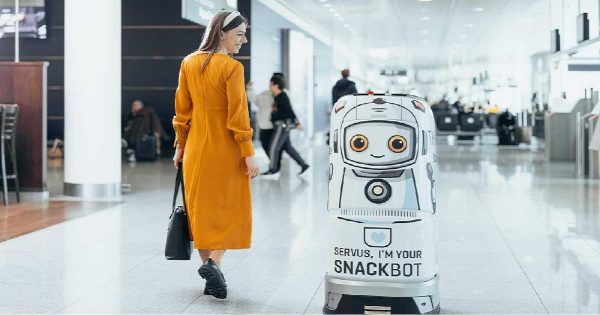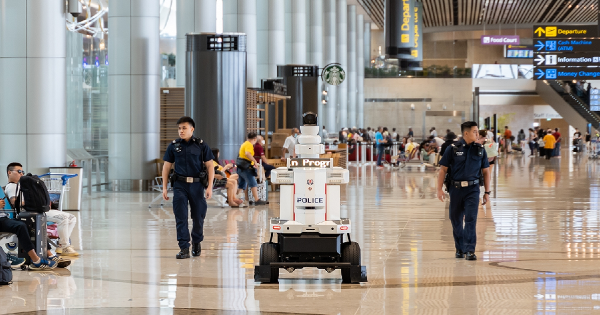A robot has travelled as an airline passenger for the first time during a landmark journey launched at Los Angeles International Airport in mid-December 2014.
The robot, called Athena, was created by German roboticists and is the first robot to have paid for a seat on a passenger plane.
Athena was checked onto a flight from Los Angeles International Airport and pushed in a wheelchair, dressed in a shirt and sneakers, onto Lufthansa flight number 9801.
Athena was pushed through the Tom Bradley International Terminal in a wheelchair, dressed in a T-shirt and red shoes.
It had a passport and ticket, and had to go through the usual security procedures as its fellow human passengers before boarding the LH flight from LAX to Frankfurt.
Security-wise, Athena didn’t face the metal detector but instead was given a customised pat-down by TSA (Transport Security Administration) screeners.
On board the Lufthansa aircraft, Athena had her seatbelt fixed in place, then travelled much as would a regular passenger – the whole scenario a test of how people respond to robotic technology integrated into a traditionally all-human environment.
From Frankfurt, Athena headed for the Max Planck Institute for Intelligent Systems’ Autonomous Motion facility, located in Tübingen. Here, the robot will be taught a host of new skills – including walking on unlevel terrain – in preparation for its future role.
It was met by TV crews and many fellow passengers took photos of the humanoid.
The future
Athena is going to Germany to learn to walk. It will be developed at the Max Planck Institute for Computational Learning and Motor Control Laboratory
Athena is the product of Salt Lake City-based robotics firms Sarcos and is designed as a system capable of undertaking tasks that would otherwise expose humans to significant levels of risk.
Other robots
Earlier this month, Nescafe began using a humanoid called Pepper to help sell its coffee machines in Japan.
The sleek, all-white robot, has a tablet mounted to its chest, and can chat with customers about their coffee habits and preferences.
Equipped with the latest voice and emotion recognition technology, Pepper is able to read people’s facial expressions and listen to their tone of voice to analyse how they’re feeling.







